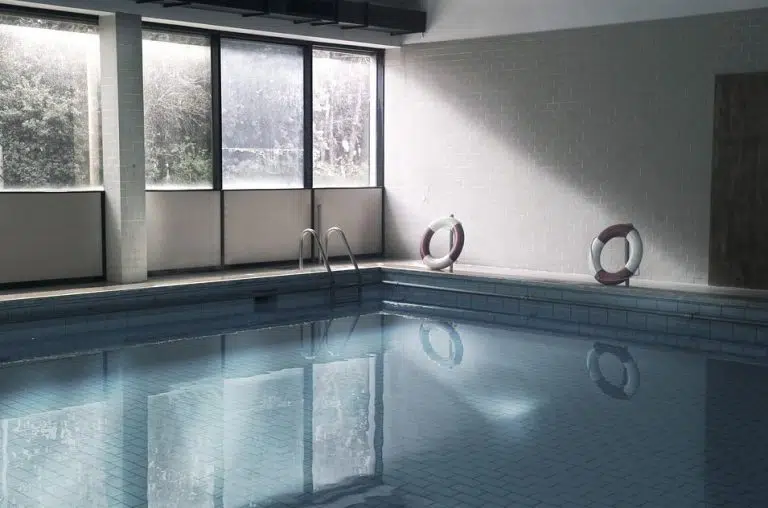Is Your Pool ADA Compliant?
November 16, 2020
Through our history people with disabilities have forged ahead to be recognized as part of an able society. Disability is not inability. In agreement with the Americans with Disabilities Act (ADA), it is a requirement that people with disabilities are accorded equal opportunities in our society. Before the Act, people with disabilities were sidelined for many years when it came to recreational activities like swimming.
All this is thanks to the Department of Justice (DOJ), which in 2010 published the updated Standards for Accessible Design. The requirements apply to existing and newly constructed pools. The regulations had people with disabilities in mind. With this set of rules, people with disabilities can enjoy swimming at the same locations as everyone else.

The regulations demand that public entities and accommodations like hotels must ensure they meet ADA requirements for pools. The state is also obliged to provide swimming pool programs for people with disabilities. The following elements are essential for your swimming pool to be deemed ADA compliant:
Program Accessibility
- Program accessibility includes all pool-related activities, services, and programs. It is a fundamental requirement for individuals with disabilities to be able to use state and local government facilities and programs.
- People with disabilities cannot be denied participation because a facility is inaccessible or unusable. The program does not mean that all pools within your entity should be accessible. If you have only one existing swimming pool, its swimming program must be accessible.
- For you to meet these requirements, you can opt for structural adjustments or get new equipment. Either way, your move should be in line with the 2010 standards.
- You must provide people with disabilities, independent operations.
- The accessible pool features must always be available to maintain program accessibility whenever the public accesses the facility.
- Unless it is an unreasonable burden, the sharing of accessible equipment between pools is not allowed.
Barrier removal readily achievable
- For your pool to be ADA compliant, barrier removal should be readily achievable. Public accommodation places like hotels, swim clubs, and public sites must eliminate physical barriers in existing pools until it is readily achievable. Readily achievable means, one can accomplish this without difficulty or overburdening their finances. What is readily achievable varies from one facility to another, and the time duration is similarly not the same from location to location. Your economic position also determines what is deemed readily achievable.
- Readily achievable in an existing pool may involve installing a fixed pool lift or an accessible means of entry as long as they offer independent operation. Depending on one’s ability, you may opt for alternatives such as portable pool lifts. All this should be in line with the 2010 standards.
- The barrier removal regulation on existing pools is a continuous process, and public entities can achieve it over time.
- Entities can use a non-fixed lift, purchased before 2012, March 15, that is operational and in compliance with the 2010 standards as long as it is kept in position for use throughout the facility when the pool is accessible to the public.
New pool construction
- All new pools built by the state or public entities must be accessible and usable by persons with disabilities. These entities must review the 2010 standards before constructing the pool.
- Newly constructed and altered swimming pools must have an accessible entry and exit for people with disabilities.
- When alterations made to a new pool change its usability, they must comply with the 2010 standard regulations. Any alterations made to a new pool must align with the 2010 standards, putting in mind program accessibility and readily achievable barrier conditions.
Use of Accessible features
- The accessible features are for persons with disabilities. It does not mean that they should only be installed when a person with a disability comes to the pool. It means that it should always be available and in good condition when the pool is open.
- It is the obligation of the public entity or public accommodation to ensure they have a well-trained staff that understands how to use the accessible features and keep up with proper maintenance of the equipment to ensure accessibility at all times.
- When a pool wall is 300 linear feet, it is considered a large pool and must have two accessible entry and exit means. When it is less than 300 linear feet, it must provide at least one accessible entry or exit.
When the public accesses a pool, it needs to be ADA compliant. The regulations mentioned above apply to existing and newly constructed swimming pools. Making the changes to ensure your pool is ADA compliant is not an easy task and can be costly for your business or entity. For this reason, the government allows for readily achievable conditions and tax credits or deductions. Once your pool is ADA compliant, you do not need to worry about your next customer since you will have created a level playing field for all your visitors or customers.
